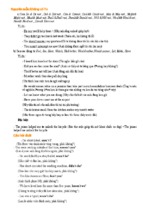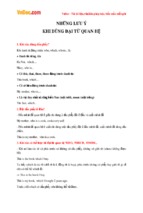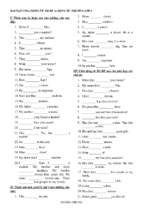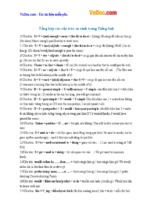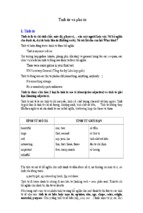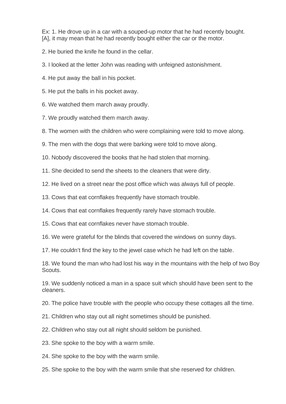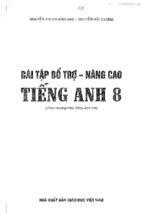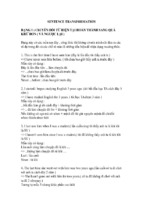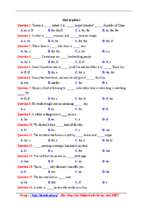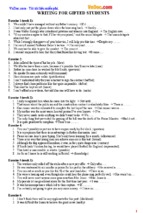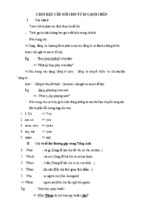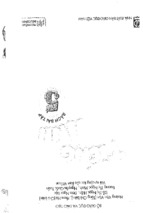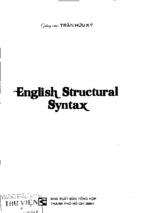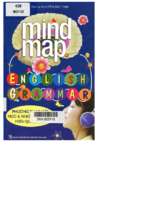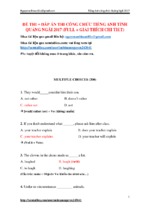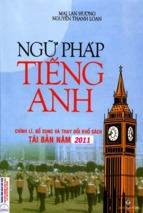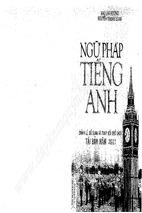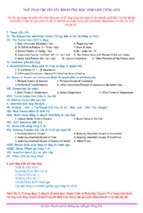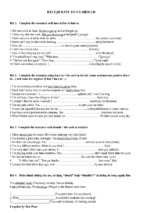visit the link to get test
Website : https://1001dethi.com/ dt 0909265875 .thầy phúc
SÁCH STARTERS :
Cụ thể : 1 bộ sách Starters 9 cuốn +audio listening
Trọn gói : 50.000Đ.
SÁCH MOVERS :
Cụ thể : 1 bộ sách Movers 9 cuốn + audio listening
Trọn gói : 50.000Đ.
SÁCH FLYERS :
Cụ thể : 1 bộ sách Flyers 9 cuốn +audio listening
Trọn gói : 50.000Đ
SÁCH KET :
Cụ thể : 1 bộ sách KET 10 cuốn +audio listening
Trọn gói : 50.000Đ
SÁCH PET :
Cụ thể : 1 bộ sách PET 8 cuốn +audio listening
Trọn gói : 40.000Đ
SÁCH Longman New Real Toeic (Trọn bộ 3 cuốn RC,LC và Full)
Trọn gói : 30.000Đ
A HANDBOOK OF ENGLISH GRAMMAR
SOME OTHER ELBS LOW-PRICED EDITIONS
Collins
French
Gimson
Glover
Gowers
Gowers
Halliday,
McIntosh and
Strevens
Herbert
Hill
Homby
Homby
Homby and
Parnwell
Jones (revised
by Gimson)
Jupp and Milne
O'Connor
Palmer
Quirk
Scott, Bowley,
Brockett, Brown
and Goddard
Thomson and
Martinet
Thomson and
Martinet
Vallins
Vallins
Webster
Wood
Wood
A Book of English Idioms
English in Tables
An Introduction to the Pronunciation
of English
Build Up Your English
The Complete Plain Words
Fowler's Modern English Usage
The Linguistic Sciences and Language
Teaching
Longman
Oxford University Press
Arnold
Dent
Penguin
Oxford University Press
Longman
The Structure of Technical English
A Guide to Correct English
Guide to Patterns and Usage in English
Oxford Advanced Learner's Dictionary
of Current English
And English Reader's Dictionary
Longman
Oxford University Press
Oxford University Press
Oxford University Press
Everyman's English Pronouncing
Dictionary
English Sentence Structure
Better English Pronunciation
Dent
Oxford University Press
A Grammar of English Words
The Use of English
English Grammar
Heinemann Educational
Cambridge University
Press
Longman
Longman
Heinemann Educational
A Practical English Grammar
Oxford University Press
A Practical English Grammar Combined
Exercises, Vols. I & II
The Best English
Good English: How to Write It
Read Well and Remember
Current English Usage
English Prepositional Idioms
Oxford University Press
Pan
Pan
Pan
Macmillan
Macmillan
A HANDBOOK
OF
ENGLISH
GRAMMAR
R. W. ZANDVOORT
Emeritus Professor of English
in the University of Groningen
with the assistance of
J.
A. VAN EK
Director of the Institute of
Applied Linguistics of the
University of Utrecht
Seventh Edition
THE ENGLISH LANGUAGE BOOK SOCIETY
and
LONGMAN GROUP LTD
LONGMAN GROUP LIMITED
London
Associated companies, branches and representatives
throughout the world
© R. W. Zandvoort 1962, 1965, 1967
© R. W. Zandvoort and J. A. van Ek 197o, 1972, 5975
All rights reserved. No part of this publication
may be reproduced, stored in a retrieval system,
or transmitted in any form or by any means,
electronic, mechanical, photocopying, recording, or otherwise, without the prior permission
of the Copyright owner.
ISBN o 582 55339 3
First published 1957
Second edition 1962
Third edition 1965
Fourth edition 1967
Fifth edition 197o
Sixth edition 1972
Seventh edition 1975
Fifth edition published for E.L.B.S. 1970
Sixth edition published for E.L.B.S. 1972
Seventh edition published for E.L.B.S. 1975
ELBS edition reprinted 1976
PRINTED IN SINGAPORE BY
SINGAPORE OFFSET PRINTING CO. (PTE) LTD.
PREFACE
THIS book was originally designed as a manual of English grammar
for Dutch students. As such it ran into six editions in less than
twice as many years, and drew a good deal of attention outside the
Netherlands. A French version (Grammaire Descriptive de l'Anglais
Contemporain) appeared in 1949, and more than one reviewer urged
the desirability of a unilingual edition for general use, with the
comparisons with and translations into Dutch left out. The author
is obliged to Messrs. Longmans, Green & Co. for enabling him to
comply with these flattering suggestions, and to Messrs. J. B.
Wolters, the publishers of the English-Dutch edition, for their
co-operation. He has availed himself of the opportunity to subject
the whole work to a thorough revision, and to introduce a number
of additions and textual alterations where these seemed to be
called for.
As the French title well expresses it, this is a descriptive grammar
of contemporary English. It deals with accidence and syntax,
leaving aside what belongs rather to idiom and is not amenable to
general statement. It likewise eschews historical digressions;
contemporary and historical (or, in the terminology of modern
linguistics, synchronic and diachronic) grammar are, in the author's
opinion, best treated separately. In this, as in other respects, he
confesses himself a pupil of Kruisinga, whose Handbook of PresentdayEnglish, despite certain extravagances in its fifth and final edition,
is still the most original and stimulating treatment of English syntax.
While specific comparisons with Dutch usage have been removed,
some of them have been replaced by references to other languages.
They may help both British and continental students to realize
some of the peculiar features of the English language. Identity is
sometimes most clearly brought out by contrast. If I have anywhere
erred by generalizing, I shall be glad to have instances pointed out
to me.
PREFACE
Vi
As will be seen, this book contains numerous references to other
publications. This is done deliberately, to impress upon the
student the fact that a handbook is only a point of departure. If
it has not roused his curiosity and encouraged him to further
research, it has at least partly failed of its purpose.
Groningen
R. W. ZANDVOORT
NOTE ON THE SECOND TO FOURTH
EDITIONS
THESE editions contain a number of corrections and additions,
many of which are due to four important books on modern English
that have recently appeared, viz. Present-Day English Syntax, by
G. Scheurweghs (London, 1960), The Categories and Types of
Present-Day English Word-Formation, by H. Marchand (Wiesbaden, 1960), Notions Essentielles d' Anglais, by J. Zajicek (Paris,
1965), and A Modern English Grammar, by K. Schibsbye (London,
1965). For other improvements the author is indebted to reviewers
of the first edition and to such experts as Dr. J. A. van Ek, Mr.
P. A. Erades, Dr. J. Gerritsen, Mr. N. E. Osselton, M.A., Mr. J.
Posthumus, Mr. P. M. Vermeer, and Dr. F. T. Wood, by whose
articles in periodicals (English Studies, Moderna Sprak) or private
communications he has greatly profited.
R. W. ZANDVOORT
Amersfoort
NOTE ON THE FIFTH TO SEVENTH EDITIONS
THESE editions have benefited by the active collaboration of Dr.
J. A. van Ek, whose assistance will also extend to any future
editions. Valuable comments have again been contributed by Dr.
J. Gerritsen, Mr. N. E. Osselton, M.A., and Mr. J. Posthumus.
R. W. ZANDVOORT
Amersfoort
CONTENTS
Chap.
Page
Preface
v
PART I
VERBS
Introductory
1
Regular Verbs 1-5.1- Irregular Verbs 6-11. - Grouping of Forms and Functions 12.
I. Infinitive
4
Plain Infinitive 13-21. - Infinitive with to 22-36. Accusative with Infinitive 37-45. - Nominative with
Infinitive 46-52. - For + Acc. with Infinitive 53-60. Anaphoric to 61.
II. Gerund and Present Participle
24
General 62-63. - Gerund 64-74. - Present Participle
75-87. - Progressive 88-98. - Verbal Forms in ing not
derived from Verb Stems 99. - Gerund or Present Participle ? 100-105.
HI. Past Participle - Passive Voice
48
Past Participles 106-116. - Passive Voice 117-125.
IV. Present, Past, and Perfect Tenses
58
General 126-127. - Present Tense 128-134. - Past
Tense 135-136. - Modal Preterite 137-139. - Perfect
Tense 140-142. - Pluperfect 143-146.
V. Auxiliaries
64
General 147-148. - Can-May 149-163. - Must-OughtShould 164-168. - Shall-Should 169-178. - WillWould 179-184. - Future Tense 185-193. - To Do 194202. - To Dare and To Need 203-209. - Used (to)
210-213.
VI. Mood and Modality
. . 86
Subjunctive 214-221. - Modal Preterite 222. - Auxiliaries of Modality 223. - Adverbs of Modality 224.
1Except in the right-hand margin, references, as throughout the book, are
to sections.
vii
viii
CONTENTS
PART II
NOUNS
Chap.
Page
Introductory
90
. .
Regular Nouns 225-232. - Irregular Nouns 233-238.
- Nouns with only one Number Form 239-244. - Plurals
and Genitives of Classical Nouns 245-246.
I. Use of the Number Forms
. . . . . . . . 97
Class-Nouns 247-248. - Abstract and Material Nouns
249-250. - Nicknames 251. - Names of Seasons etc.
252. - Attributive Nouns 253-258. - Collective Nouns
259-266. - Numeratives 267-268.
IL Use of the Genitive
103
. . . . . . .
The Genitive Singular 269-292. [General 269. - Attributive Genitive 270-274. - (Semi-)independent Genitive
275-276. - Post-Genitive 277. - Local Genitive 278284. - Specifying Genitive 285. - Classifying Genitive
286. - Specifying and Classifying Genitive Compared 287291. - Relations between Genitive and Headword 292.]
- The Genitive Plural 293-299. - Genitive and OfAdjunct 300-317.
HI. Use of the Definite Article
117
Uses and Functions of the Definite Article 318-325. Absence of Definite Article 326-339.
IV. Use of the Indefinite Article
124
Uses and Functions of the Indefinite Article 340-348,
352-353. - Absence of Indefinite Article 349-351.
PART III
PRONOUNS
I. Personal Pronouns
128
General 354-362. - He She It 363-375. - Gender
376. - Other Uses of It, 377-385.
-
II. Possessive Pronouns
.
-
. . . . . 138
General 386-394. - Independent Possessives 395-397.
- Relations between Possessive Pronoun and Headword
398. - Possessive Pronoun and Of-Adjunct 399-400. Own 401-405.
CONTENTS
iX
Chap.
Page
III. Compound Personal Pronouns ...... .
144
Forms 406. - Weak-stressed Use 407. - Strong-stressed
Use 408-410. - Reciprocal Sense 411.
IV. Demonstrative Pronouns . .
. . 147
Forms 412. - Deictic and Anaphoric Functions 413-420.
- Determinative Function 421-423. - Anaphoric So
424-431. - Such 432-435.
V
Interrogative Pronouns
. . .. .... . 155
Who 436-440. - What 441-445. - Which 446-448. Phrases and Constructions 449. - Who ever, what ever,
which ever 450.
VI. Relative Pronouns ......
.
.
.
.
160
Who 451-455. - Which 456-461. - Restrictive and
Continuative Clauses 462. -, That 463-466. - Absence
of Relative Pronoun 467-469. - What 470-472. - Whoever, whichever, whatever 473 474.
-
VII. Indefinite Pronouns
168
Some and Any 475-483. - Every 483-485. - Each
486. - All 487-490. - Both 491-494. - Either 495497. -Neither 498-499. - None 500-501. - One 502-528.
- No 529-536. - Compound Indefinite Pronouns 537543. - (An)other 544-548. - Else 549. - Other Indefinite Pronouns 550.
PART IV
ADJECTIVES AND ADVERBS
Introductory
1R7
Adjectives and Nouns 551. - Adjectives and Pronouns 552.
- Adjectives and Adverbs 553. - Adverbs as Adjuncts
554.
Comparison
188
Comparison by means of suffixes 555-556; Comparison by
more and most 557-562; Irregular Comparison 563-566;
Compound Adjectives 567; Contrast or Superiority 568;
Comparative of Proportion 569; Comparative of Gradation
570; Absolute Superlative 571; Comparative of Infer.urity
etc. 572.
CONTENTS
PART V
SENTENCE STRUCTURE
Page
Chap.
I. The Simple Sentence . . . . . . .
195
Definition 573. - One-Word Sentences 574. - Sentences
of more than One Word 575. - Two-Nucleus Sentences
576. - Subject and Predicate 577-580. - Predicative Adjectives and Nouns 581-583. - Objects, Direct and Indirect 584-586. -- Prepositional Objects 587. - Adjuncts
588. - Attributive Adjuncts 589. - Appositions 590. Attributive and Predicative Adjectives 591. - Predicative
Adjuncts 592. - Adverbial Adjuncts 593-594. - Prepositional Adjuncts 595-597. - Adjuncts and Objects
598. - Declarative Sentences 599-600. - Interrogative
Sentences 601-604. - Imperative Sentences 605-606.
- Prohibitions 607. - Interjections 608. - Omission of
Subject 609. - Free Adjuncts 610-614. - Simple and
Compound Sentence 615.
II. The Compound Sentence
212
Main Clauses and Sub-Clauses 616-617. - Attributive
Clauses 618-627. - Predicative Clauses 628. - Adverbial Clauses 629-643. - Object Clauses 644-648. Content Clauses 649. - Subject Clauses 650-652. - Predicate Clauses 653-654. - Transitional Cases 655. - Appended Questions 656-657. - Appended Statements
657-658. - Coordinate Clauses 659-663,
III. Sentence Groups
229
Groups of two Adjoining Sentences 664-668. - Confirmative Questions and Statements 669-670. - Denials
671. - Answers to Verbal Questions 672. -- Predicate
applied to another Subject 673. - Two Sentences Combined 674. - Second Sentence introduced by Coordinating
Conjunction 675.- Second Sentence introduced by Adverb
676. - Interrupted Sentence 677.
IV. Additional Remarks on Conjunctions
234
678-680.
PART VI
ORDER OF WORDS
Order of Words
236
General 681. -' Normal' and `inverted' order 682-683. Sentences beginning with unstressed there 684. - Inverted
xi
CONTENTS
Page
Chap.
order in Declarative Sentences 685-690. - Interrogative Sentences 691. - Imperative Sentences 692. - Exclamatory Sentences 693. - Place of Objects 694-699. Place of Attributive Adjuncts 700-712.-Place of Piedicative
Adjuncts 713. - Place of Adverbial Adjuncts 714-729.
- Word-order in Sub-Clauses 730-736. - Order of
Clauses 737-741.
PART VII
CONCORD
Concord
.
.
.
.
.
.
.
.
.
.
.
.
. 255
General 742-743. - Concord of Person 744-746. Concord of Number 747-767. - Concord of Gender 768.
- Concord of Tense 769.
PART VIII
CONVERSION
Conversion .
.
.
.
.
.
.
...... 265
General 770-773. - Complete Conversion 774-777.
[Verbs as Nouns 774. - Nouns as Verbs 775. - Adjectives
as Verbs 776. - Adverbs as Nouns or Verbs 777.] Partial Conversion 778-802. [Adjectives as Nouns 778791. - Nouns as Adjectives 792-800. - Adverbs as
Adjectives 801. - Sentences as Nouns or Verbs 802.1
PART IX
WORD FORMATION
I. Composition
277
Definition 803. - Compound Nouns 804-814. - Compound Adjectives 815-818. - Compound Pronouns 819.
- Compound Verbs 820-825. - Other Parts of Speech
826. - Repetition Compounds 827-830. - Hyphens 831.
II. Derivation
289
General 832-836. - Prefixes 837-873. - Suffixes 874955. [Nouns 875-910. (Personal and Concrete NonPersonal Nouns 875-885. - Diminutives 886-891. Abstract and Collective Nouns 892-910.) Adjectives 911944. - Verbs 945-948. - Adverbs 949-955.]
CONTENTS
XII
Page
Chap.
323
III. Additional Remarks on Word Formation
Back-formation 956. — Shortening 957-958. — Portmanteau-words 959. — Words composed of Initials 960.
APPENDIX
Irregular Verbs
To Have
To Be
Verbal Forms with thou
Third Person Singular in (e)th
Spelling of Inflected and Derived Forms
Pluralia Tantum
Classical and other Foreign Plurals
Traditional Genitives
Weak Forms of Pronouns
Objects and Prepositional Adjuncts
Mood — Modal — Modality
American English
Verbal Form in -ing preceded by a-
•
•
326
333
334
334
335
335
338
339
339
340
341
342
343
344
INDEX
Index
345
The phonetic transcription is identical with that used in Daniel Jones's
English Pronouncing Dictionary
BOOKS REFERRED TO1
W. S. Allen, Living English Structure, London 1947.
The American College Dictionary, New York 1947.
R. A. Close, English as a Foreign Language, London 1962.
W. E. Collinson, Spoken English, Leipzig 1929.
The Concise Oxford Dictionary (COD).
J. A. van Ek, Four Complementary Structures of Predication, Groningen 1966.
H. W. Fowler, A Dictionary of Modern English Usage, Oxford 1927 (MEU).
C. C. Fries, The Structure of English, New York 1952.
A. S. Hornby, A Guide to Patterns and Usage in English, London 1954.
0. Jespersen, A Modern English Grammar on Historical Principles, Heidelberg/Copenhagen 1909-1949.
0. Jespersen, Essentials of English Grammar, London 1933.
D. Jones, An English Pronouncing Dictionary, 13th ed., London 1967 (EPD).
H. Koziol, Handbuch der Englischen Wortbildungslehre, Heidelberg 1937.
E. Kruisinga, A Handbook of Present-day English, 5th ed., Groningen 1931-2
(Handbooks). - Grammar and Idiom, Groningen 1935.
E. Kruisinga and P. A. Erades, An English Grammar, 8th ed., Groningen
R. B. Long, The Sentence and its Parts, Chicago 1961.
[1953-1960.
H. Marchand, The Categories and Types of Present-Day English WordFormation, Wiesbaden 1960.
H. L. Mencken, The American Language, 4th ed., New York 1936.
C. T. Onions, An Advanced English Syntax, London 1911, new ed., 1971.
The Oxford English Dictionary (OED).
H. E. Palmer, A Grammar of Spoken English, Cambridge 1924.
H. Poutsma, A Grammar of Late Modern English, Groningen, Part I, 2nd
ed., 1928 (Grammar2); Part II, 1914-1926.
R. Quirk, S. Greenbaum, G. Leech, J. Svartvik, A Grammar of Contemporary English, London 1972.
F. L. Sack, The Structure of English, Cambridge & Berne 1954.
G. Scheurweghs, Present-Day English Syntax, London 1959, 2nd ed., 1961.
K. Schibsbye, A Modern English Grammar, London 1965, 2nd ed., 1970.
B. M. H. Strang, Modern English Structure, London 1962.
H. Sweet, A New English Grammar, Part I, Oxford 1900; Part II, Syntax,
Oxford 1903.
W. F. Twaddell, The English Verb Auxiliaries, Providence, R.I., 1960.
A. C. E. Vechtman-Veth, A Syntax of Living English, Utrecht 1928.
H. C. Wyld, The Universal Dictionary of the English Language, London 1936.
J. Zajicek, Notions Essentielles d' Anglais, Paris 1965.
R. W. Zandvoort, Collected Papers, Groningen 1954 and 1970.
1The dates are those of the editions used by the author.
PART I
VERBS
INTRODUCTORY
A. REGULAR VERBS
1. An English verb normally has the following forms:
a. the stem: play, call, wait, pass;
b. the stem + ing: playing, calling, waiting, passing;
c. the stem + sibilant-suffix:' plays [pleiz], calls [ko:lz], waits
[weits], passes ['pa:siz].
As appears from the examples, [iz] is used after stems ending in a sibilant,
[z] in other cases, except after breathed consonants, [s] after breathed
consonants, except sibilants.
[iz] is spelt es; if the stem ends in e in the spelling (e.g. change), s only is
added. [z] and [s] are spelt s. On spellings like cries (stem cry), goes (stem go),
see Appendix, p. 336.
d. the stem + dental-suffix:2played [pleid], called [ko :1d], waited
['weitid], passed [pa:st].
As appears from the examples, [id] is used after stems ending in [d] or [t],
[d] in other cases, except after breathed consonants, [t] after breathed
consonants, except [t].
The spelling is ed in all three cases; if the stem ends in e in the spelling
(e.g. fade), d only is added. — On spellings like cried (stem cry), admitted
(stem admit), see Appendix, p. 336 f.
2. The stem of an English verb is used in the following functions:
a. INFINITIVE, often preceded by to3(13 ff.);
b. PRESENT TENSE, with the exception of the third person singular
(128 ff.);
The sibilants (or hissing sounds) are [s], [z], [I] and [3].
adj. & n., (phon.) of certain consonantal sounds formed by placing point
of tongue against, or near, the upper teeth; such sounds as [t, d, n, 0, a].'
(Wyld, The Universal Dictionary s.v. dental.)
3 When referring to a verb by itself, it is customary to mention the stem
preceded by to: To play is a regular verb.' Verbs that are not used as
infinitives, however, are indicated by the mere stem: ' What is the past
tense of can?' (See 6.)
2
1
2
C.
VERBS
SUBJUNCTIVE (214 ff.);
d. IMPERATIVE (605 if.).
3. The stem + ing is used in the following functions:
a. GERUND (62 if.);
b. PRESENT (Or IMPERFECT) PARTICIPLE (75 if.).
4. The stem + sibilant-suffix is used as THIRD PERSON SINGULAR
of the present tense (128 ff.; also 215 ff.).
5. The stem + dental-suffix is used in the following functions:
PAST (Or PERFECT) PARTICIPLE (106 if.);
b. PAST TENSE (Or PRETERITE rpretaritp (135 if.).
a.
B.
IRREGULAR VERBS
6. The following verbs have only one of the four forms enumerated
in 1, viz. the stem: can, may, must, shall, will.
This stem is used in only one of the functions mentioned in 2,
viz. the present tense, including, however, the third person singular,
which in other verbs is expressed by the stem + sibilant-suffix (4).
On must as a preterite, see 165.
7. To dare and to need occur in all four forms, but usually take
no sibilant-suffix in the third person singular present tense when
used as auxiliaries.
To be, to do, and to have have irregular forms in the third
person singular present tense: is [iz], does [dAz], and has [hxz],
besides being irregular in other respects.
8.
9. Instead of the stem + dental-suffix, a fairly large number of
verbs use an irregular form in the function of the past tense or
the past participle, or of both.
Verbs with an irregular past tense and a regular past participle
are rare: crow — crew (usually crowed) — crowed; dare — durst
(usually dared) — dared.
Verbs with a regular past tense and an irregular past participle
are somewhat more numerous (nine in all): hew — hewed — hewn
(or hewed); show — showed — shown.
Most of these verbs, however, have irregular forms for both
functions.
3
10. Verbs with irregular forms for both the past tense and the past
participle may be divided into four groups:
a. Both the past tense and the past participle are identical with
the stem: cut, let, spread.
b. Either the past tense or the past participle is identical with the
stem: beat — beat — beaten; run — ran — run.
c. The past tense and the past participle are identical, but differ
from the stem: bend — bent; bleed — bled; seek — sought.
d. The past tense and the past participle differ from each other
as well as from the stem: begin — began — begun; fall — fell —
fallen.
11. Special mention should be made of the forms could, might,
should and would, which serve as past tenses to can, may, shall and
will (6). They are not used as past participles.
On the isolated form ought see 167.
INTRODUCTORY
For further details of the irregular verbs, and for the conjugation of to have
and to be, see Appendix.
C. GROUPING OF FORMS AND FUNCTIONS
12. Of the functions of the verb stem enumerated in 2, two, viz. the
present tense and the subjunctive, form a group with the third
person singular (4) and the preterite (5b): (I) play (the piano) —
(I suggest that she)layj(the piano) — (She) plays (the piano) —
(I or She) played (the piano). While the subjunctive is invariable
(216), the stem as present tense may, in a given context, be replaced by one of the inflected members of the group.
The other two functions of the stem, viz. the imperative — Play!
— and the infinitive — (Will you) play? (It is your turn to) play —
are mutually exclusive, nor can either of them in a given context
be replaced by an inflected member of the above group.
The infinitive in English may, therefore, be defined as that
function of the verb stem which (a) cannot by itself express a
command, (b) does not belong to the group of four described above.
In anticipation of p. 35, n. 5, it may be said that the infinitive is the use
of the verb stem in a non-finite function.
CHAPTER ONE
INFINITIVE
PLAIN INFINITIVE
13. The infinitive may occur either with or without a proclitic'
particle.2 This particle is written to, and pronounced [tu] before a
vowel, [to], sometimes [tu], before a consonant. The infinitive
without to is known as the PLAIN INFINITIVE.
14. The plain infinitive is only used in a verbal, never in a nominal
function. In cases where other languages use a plain infinitive as
the subject, object or nominal predicate of a sentence, English uses
either an infinitive with to or a gerund.
(
,.'N know him is to like him.
Do you like swimming? (Cf. 68 ff.)
15. The plain infinitive is used either by itself, or in combination
with another verb. The latter use, which is the commonest, will be
discussed first.
16. The plain infinitive is used:
a. with can/could, may/might, must, shall/should, will/would (cf.
6, 11 & 149 ff.).
Tell him he may go home.
She should have been more careful.
Will you open another window?
b. with to dare and to need (cf. 7 and 203 if.), chiefly in negative and
interrogative sentences:
How dare you come here ?
He need not return the letter.
1Troclitic', adj. & noun, is defined by the Concise Oxford Dictionary (abbr.
COD) as `(Monosyllable) closely attached in pronunciation to following
word & having itself no accent' (the latter with reference to Greek).
2 A particle, acc. to COD, is a 'minor part of speech, esp. short indeclinable
one'. (On the term 'part of speech', see 770.)
4
- Xem thêm -

